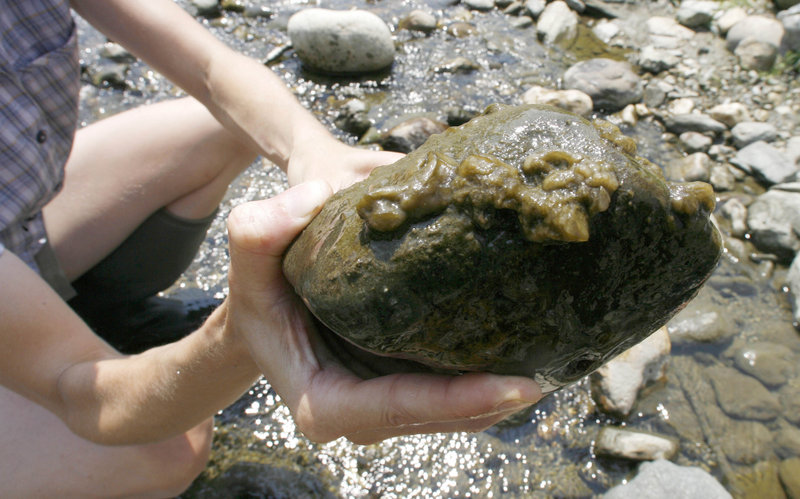MONTPELIER, Vt. – Fear that an invasive algae species known as “rock snot” might have contaminated a Vermont fish hatchery has prompted the U.S. Fish and Wildlife Service to donate thousands of Atlantic salmon to native American tribes in the Northeast to prevent a possible spread of the algae.
On Thursday, the Connecticut River Atlantic Salmon Commission voted unanimously to remove the salmon from the federal Bethel Fish Hatchery, clean them and donate them to the tribes so the facility can be closed and cleaned.
The didymo algae, believed to be transported by anglers moving from one body of water to another, pose no threat to human health. But rock snot can overwhelm cold water lakes and streams and biologists fear the Vermont hatchery could be contaminated with the algae because it is known to be present in the White River, the waterway that damaged the hatchery during the August flooding.
“These are very valuable fish. Traditionally they would be used to further the efforts of restoration of Atlantic salmon to the Connecticut River basin,” Bill Hyatt, the director of the Connecticut Bureau of Natural Resources and the chairman of the Connecticut River salmon commission, said Thursday. “Unfortunately, with the contamination of didymo at the facility, it makes it totally impossible to use the fish in that manner.”
The hatchery also contains about 434,000 lake trout destined for lakes Ontario and Erie. A separate decision about whether those fish can be safely released without spreading rock snot, or whether they will have to be disposed of, is expected later this month.
The Atlantic salmon at the Bethel hatchery are part of a Fish and Wildlife Service program that is working to restore the species to its traditional habitat along the Connecticut River. Historically, the fish hatch in the tributaries and young salmon swim downstream into the Atlantic Ocean, where they remain for several years before returning to the streams where they were hatched to spawn.
Over the last 10 to 15 years didymo has been found across North America. It is thought to be transported on fishing gear.
About 3,000 salmon, some as large as five pounds, will be given to the Native American tribes. Another 3,400 smaller salmon, about six inches, will be released into parts of the Connecticut River basin where didymo is known to be present so there is no threat of new contamination.
Thousands more were washed into the White River.
Once the fish have been removed from the hatchery, technicians will then scrub the hatchery’s fish tanks and other equipment as part of efforts to repair the facility that was damaged by the floodwaters. It could take up to two years to repair the hatchery, said Bill Archambault, the Fish and Wildlife Service’s assistant regional director for fisheries.
Fred Corey of the Aroostook Band of Micmacs around Presque Isle, Maine, said his tribe expects to receive 120 salmon that will be used as part of a Nov. 20 ceremony to mark the 20-year-anniversary of the tribe’s formal recognition by the federal government.
Send questions/comments to the editors.



Success. Please wait for the page to reload. If the page does not reload within 5 seconds, please refresh the page.
Enter your email and password to access comments.
Hi, to comment on stories you must . This profile is in addition to your subscription and website login.
Already have a commenting profile? .
Invalid username/password.
Please check your email to confirm and complete your registration.
Only subscribers are eligible to post comments. Please subscribe or login first for digital access. Here’s why.
Use the form below to reset your password. When you've submitted your account email, we will send an email with a reset code.